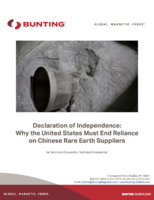Office of the Federal Register releases updated IBR Handbook.
Press Release Summary:
IBR Handbook describes purpose and legal effect of Incorporation By Reference, and details how IBR supports agencies to maximize reliance on voluntary consensus standards and minimize dependency on government-unique standards. Handbook provides single resource for agencies that are considering incorporation of material by reference, stating that when federal agencies incorporate voluntary consensus standards, "it saves taxpayer money, encourages efficiency, and promotes economic competition."
Original Press Release:
Office of the Federal Register Releases Updated Incorporation by Reference (IBR) Handbook
The Office of the Federal Register has published an update of its IBR Handbook, which describes the purpose and legal effect of incorporation by reference (IBR), and details how IBR supports agencies to maximize their reliance on voluntary consensus standards and minimize their dependency on government-unique standards. The American National Standards Institute (ANSI) serves as a bridge between the public and private sectors on standardization matters.
As government agencies utilize voluntary consensus standards in various ways, they are permitted to incorporate a standard by reference (or “IBR” the standard) into a regulation. The IBR Handbook provides a single resource for agencies that are considering the incorporation of material by reference, stating that when federal agencies incorporate voluntary consensus standards, “it saves taxpayer money, encourages efficiency, and promotes economic competition.”
The document also makes reference to a number of other key documents, including:
The Administrative Conference of the United States (ACUS) Recommendation 2011-5, Incorporation by Reference
The National Technology Transfer and Advancement Act of 1995 (NTTAA)
The recently revised White House Office of Management and Budget (OMB) Circular A-119
For more information related to IBR, how it impacts stakeholders, and recent news on the subject, ANSI encourages stakeholders to visit www.ansi.org/ibr.
Users who wish to view IBR-ed standards may visit ANSI’s IBR Portal. The portal provides a voluntary, centralized infrastructure that can help the hundreds of SDOs in the U.S. make their IBR-ed standards available in read-only format, should they wish to participate. The ANSI IBR Portal provides a mechanism for access to standards that have been incorporated by reference in the U.S. Code of Federal Regulations (CFR). These standards incorporated by the U.S. government in rulemakings are offered at no cost in “read only” format and are presented for online reading. Standards available on the ANSI IBR Portal include those developed by the International Organization for Standardization (ISO), the International Electrotechnical Commission (IEC), and other SDOs. In addition to the standards available directly through the portal, several SDOs are offering free access via their own websites.
The IBR Handbook is available here.




